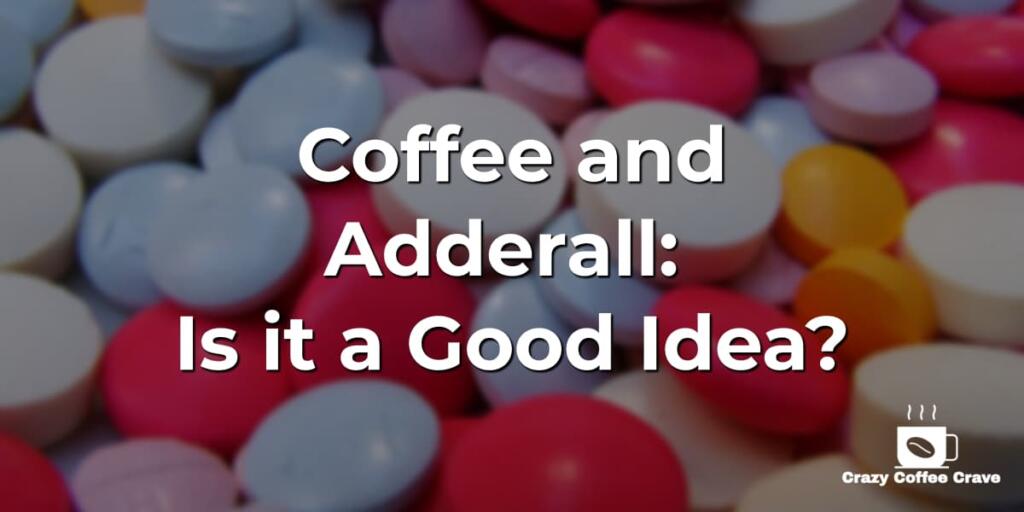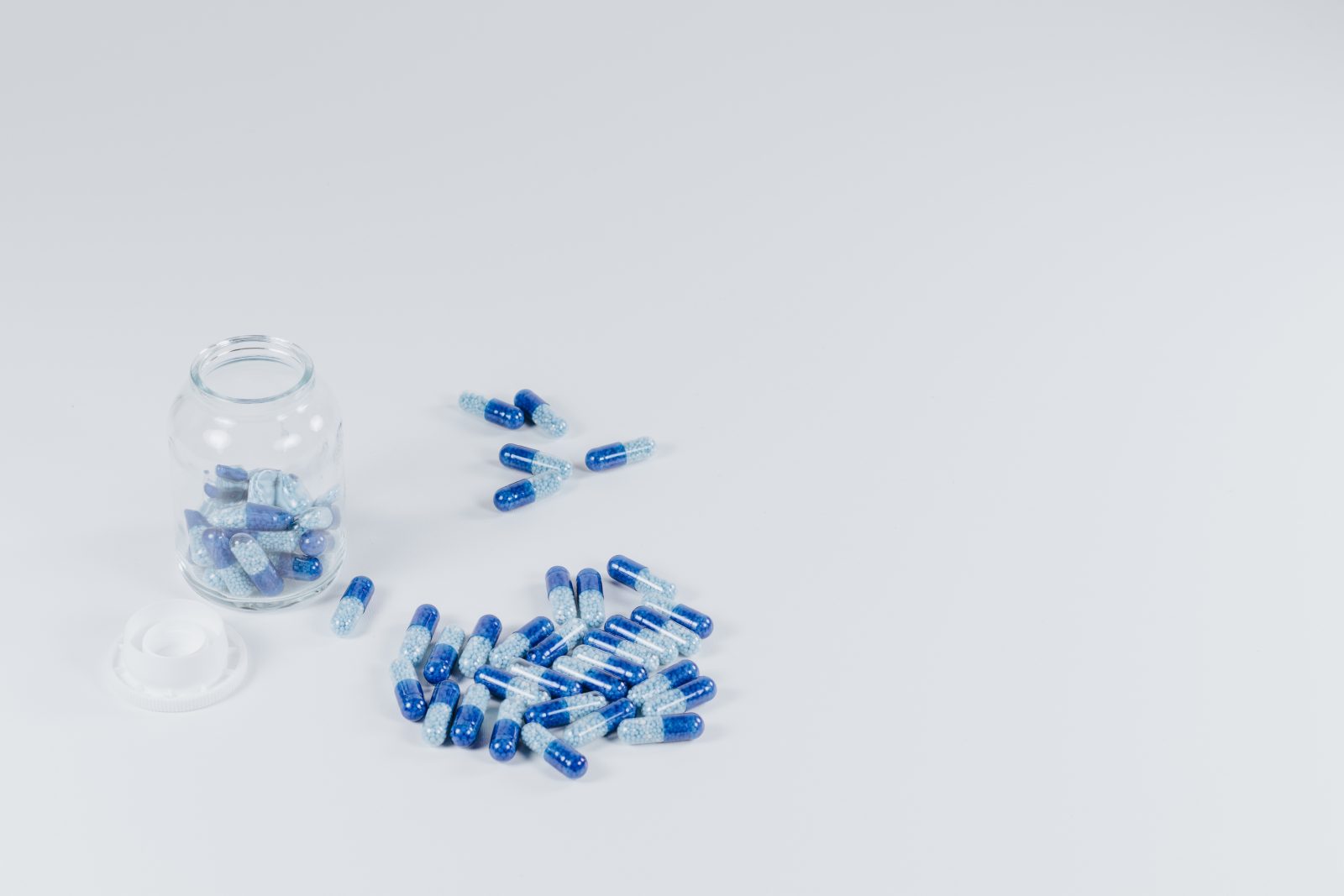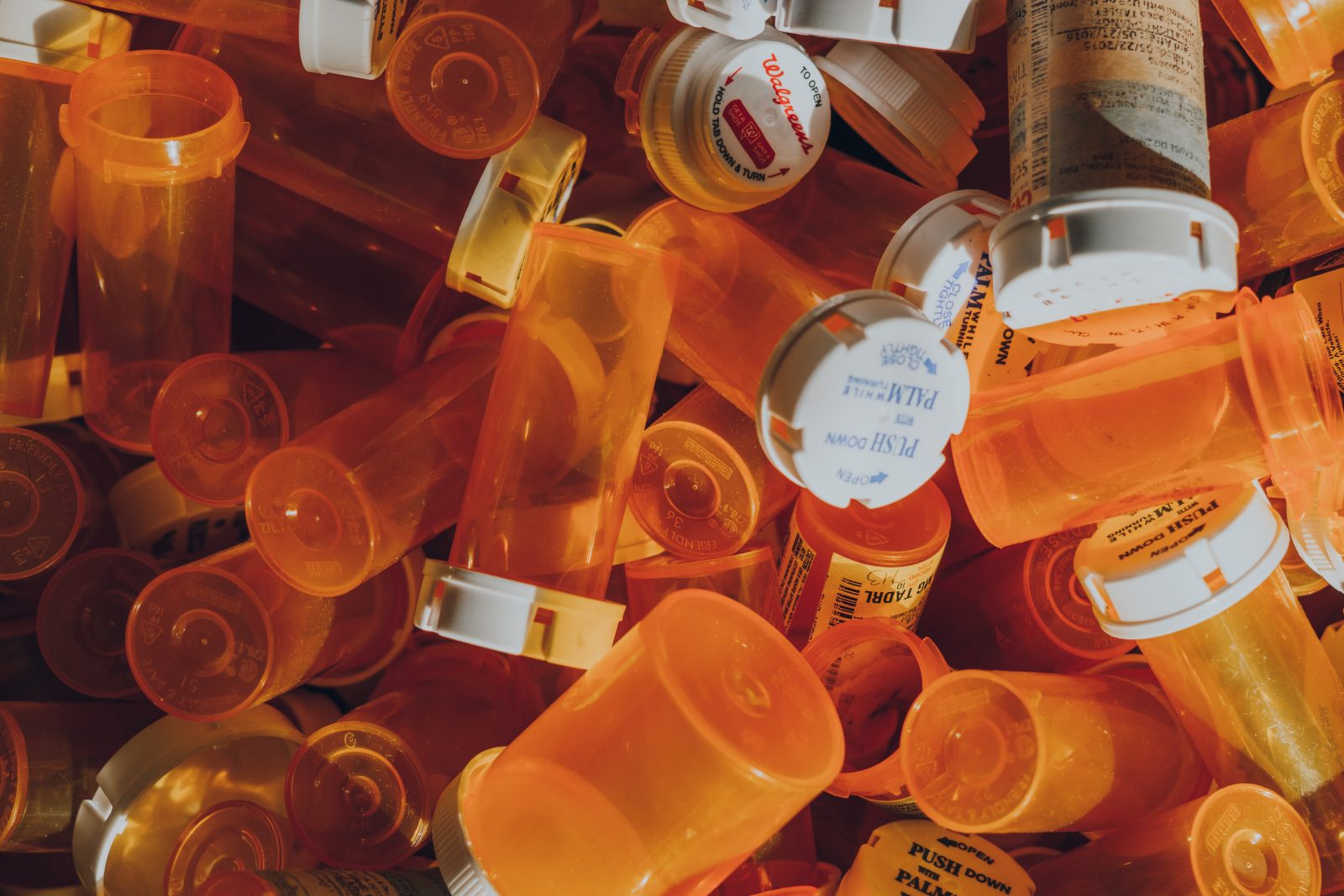When it comes to combining stimulants, there is often concern about the potential effects and interactions. Adderall, a prescription medication commonly used to treat attention-deficit/hyperactivity disorder (ADHD), and caffeine, a natural stimulant found in coffee, both affect the central nervous system.
Table Of Contents
−- Is it safe to mix Adderall and coffee?
- Adderall and Coffee
- Effects of combining Adderall and Coffee
- Risks and side effects
- Adderall and caffeine overdose
- What is Adderall?
- What happens when you take Adderall?
- Illegal uses of Adderall
- Common signs of addiction
- Adderall is not suitable for everyone
- In conclusion
In this article, we will explore the effects of taking Adderall and coffee together, the potential risks and side effects, and the importance of seeking medical advice before combining these substances.

[Disclaimer: The information provided in this article is for educational purposes only and is not intended as a substitute for professional medical advice, diagnosis, or treatment. Always seek the advice of a qualified healthcare provider with any questions you may have regarding a medical condition.]
Is it safe to mix Adderall and coffee?
It is important to consider the safety of mixing Adderall and coffee. The two drugs have similar effects on the central nervous system, and combining them can lead to side effects such as dizziness, anxiety, and restlessness. Even though a small amount of caffeine may not worsen Adderall’s side effects, it is recommended not to mix them.
Caffeine can have a major effect on Adderall’s efficiency, and studies have shown that taking caffeine at the same time as Adderall can increase the risk of side effects. Therefore, it is best to avoid mixing Adderall and coffee if possible.
Adderall and Coffee

Is coffee similar to Adderall?
Adderall is different from coffee, diet coke, or even caffeine pills. Drugs like Adderall and Ritalin have improved life for many people with ADHD. Under their doctor’s care, these drugs can help people function and cope better with their symptoms.
Does coffee make Adderall less effective?
Consuming small to moderate amounts of coffee is unlikely to cause significant problems in combination with Adderall. However, people should be aware that the caffeine in coffee might reduce the effectiveness of Adderall and enhance its side effects.
Caffeine is a natural component of coffee.
Caffeine remains in your system for about 6 hours; within this time, span-while the quantity of caffeine in your system is optimal- you will remain in a stimulated state that gradually diminishes as your body metabolizes the stimulating substance.
If you drank coffee and took your doctor-prescribed Adderall with it and suffered any combinations of the probable symptoms of Adderall overdose, the caffeine in the coffee you drank was likely potent enough to trigger an added reaction that exceeded what your prescribed Adderall medicine was intended to do.
Does caffeine potentiate Adderall?
Although ingesting a small amount of caffeine with Adderall is unlikely to be harmful, mixing these two stimulant drugs is not an excellent idea. If you or your child has a prescription for Adderall, it’s best to limit your caffeine intake, as it will intensify unpleasant side effects.

Effects of combining Adderall and Coffee
Caffeine, a natural component of coffee, is also a stimulant that affects the CNS. When caffeine is consumed in small to moderate amounts, it can lead to increased alertness and focus. However, when combined with Adderall, the effects of both stimulants may be enhanced.
The effects of taking Adderall and coffee together can vary from person to person, but some common outcomes may include:
- Increased alertness and focus
- Heightened risk of jitteriness and anxiety
- Potential for insomnia and difficulty sleeping
- Faster heart rate
It’s important to note that while caffeine may enhance the effects of Adderall, this combination can also increase the risk of adverse side effects, particularly if consumed in large quantities.
Risks and side effects
Combining Adderall and caffeine can lead to a range of side effects, including increased anxiety, elevated blood pressure, nausea, restlessness, and irritability. Some individuals may also experience headaches, dizziness, and heart palpitations. Excessive consumption of either stimulant may lead to serious health risks, such as arrhythmias and seizures.
Adderall and caffeine overdose
An ordinary cup of coffee contains 70 to 175 milligrams of caffeine depending on the coffee seed and how the coffee is prepared (drip, percolation, or espresso). Therefore, toxic doses- of over 10 grams per day for an adult- are much higher than the typical under 500 milligrams recommended safety standard. It requires 50-100 ordinary cups of coffee to reach an overdose.
However, pure powdered caffeine- sold as a dietary supplement in a sachet- can be lethal in tablespoon amounts; these facts don’t directly reveal when mixing coffee with Adderall can be safe.
But should you take a dose of Adderall while in a caffeine-stimulated state, you’ll undoubtedly experience the stimulation to the extent the dose of Adderall could deliver, plus the stimulation of the caffeine in your coffee.
Hence, if the amount of caffeine in the coffee you take adds to the dosage of Adderall your doctor prescribed, you are likely to suffer the consequences of an overdose if the combined effects amount to the level considered an overdose; a clinical experiment would be required to be able to cite reliable figures to describe such as situation precisely.
However, should you take a doctor-prescribed dose of Adderall medicine with your coffee- make sure that the caffeine content of your coffee is insufficient to trigger an overdose reaction; take a decaffeinated coffee.
Which is worse, caffeine or Adderall?
Adderall is also a Schedule II drug, meaning it has a high risk for addiction and dependence, increasing the likelihood of adverse effects. Caffeine is a drug; while you can find it on almost every corner, its effects are powerful. Caffeine is the most common and widely consumed psychoactive drug.
What is Adderall?
Adderall is a central nervous system (CNS) stimulant that contains two active ingredients: amphetamine and dextroamphetamine. It is prescribed for the treatment of ADHD and narcolepsy—a sleep disorder characterized by excessive daytime sleepiness. Adderall works by increasing the levels of certain neurotransmitters, such as dopamine and norepinephrine, in the brain. This helps improve attention, focus, and impulse control in individuals with ADHD.
What happens when you take Adderall?
The action of the substances- “amphetamine and Dextroamphetamine- increases the brain’s natural chemical systems and the production of dopamine and norepinephrine neurotransmitters that make you feel more alert, awake, and able to concentrate.
Adderall can also speed up the heart and raise blood pressure. Since epinephrine and norepinephrine are involved in the “fight or flight” reaction mode, you may feel highly jittery and hyper-aware when taking Adderall. It is fascinating that Adderall would generate opposing effects on two different persons.
The increase in dopamine and norepinephrine in the brain of a person with ADHD expands the person’s attention span, keeping him alert and focused. The same substances boost the energy level and increase wakefulness in a narcolepsy patient, making him fight his tendency to fall asleep constantly.
Due to the abundance of favorable anecdotal accounts confirming the efficacy of Adderall- despite the existing regulations in the sale and use of CNS (Central Nervous System) stimulants- adventurous persons not suffering from ADHD or narcolepsy surreptitiously acquire and use this potentially dangerous drug for other purposes:
- Weight loss.
- Studying.
- Athletic performance.
- Recreation (Getting high).
- Staying awake.

Illegal uses of Adderall
Adderall is a controlled substance and its use is regulated by law. However, it is sometimes misused in certain social settings, particularly among students, athletes, and individuals seeking to lose weight. It is important to note that using Adderall without a prescription, or using it in ways other than prescribed, is illegal and potentially dangerous.
Non-medical use of Adderall is associated with various risks, including dependency and addiction. Individuals who misuse Adderall may experience withdrawal symptoms when they stop taking the drug, and may require medical assistance to overcome dependency.
Common signs of addiction
Adderall addiction is characterized by physical or psychological dependence on the drug. Signs of addiction may include:
- Needing larger doses of the drug to achieve the desired effects
- Inability to reduce or stop using the drug despite wanting to do so
- Continuing to use the drug despite knowing it is causing harm
- Difficulty completing tasks or functioning without Adderall
- Spending significant time and resources obtaining, using, and recovering from Adderall use
If you or someone you know is struggling with Adderall addiction, it is important to seek medical help and support.
Adderall is not suitable for everyone
Adderall is not appropriate for everyone. Individuals with certain medical conditions, including high blood pressure, mental illness, seizure disorders, and certain heart conditions, should avoid using Adderall. Additionally, Adderall is generally not recommended for older adults or for children with certain psychiatric disorders.
For patients who meet the criteria for ADHD or narcolepsy, Adderall may be prescribed as part of a comprehensive treatment plan. However, it should always be used under the guidance of a qualified healthcare provider.
Adderall is approved for treating ADHD in children aged 3 years. Adderall is also approved for treating ADHD in children 6 years and older. In addition, children with narcolepsy at age 12 and older may be treated with Adderall.
According to anecdotal evidence, Adderall has been known to have side effects that disappear when the patient gets used to the drug, such as:
More Common:
- Anxiety.
- Dry mouth.
- Lack or loss of strength.
- Stomach pain.
- Weight loss.
Reported percentages of occurrence:
- Appetite loss (up to 36 percent).
- Weight loss (up to 10)
- Dry mouth (up to 35).
- Abdominal pain (up to 14)
- Nausea, vomiting, diarrhea, dyspepsia (1-10).
- Transient Blood pressure elevation (up to 35).
- Tachycardia, palpitation (1-10).
- Insomnia (up to 27).
- Nervousness (up to 13).
- Emotional lability, agitation, anxiety (1-10).
- Headache (up to 26).
- Somnolence, twitching, dizziness, speech disorder (1-10).
- Decreased libido, dysmenorrhea, and impotence (1-10).
- Urinary tract infection(1-10).
- Fever, infection, fatigue, tooth disorder (1-10).
- Dyspnea (1-10).
Thus far, our sources have established that Adderal- a CNS (central nervous system) stimulating drug- is not intended to be a “recreational drug” like caffeine or alcohol; it is a potentially dangerous drug for those identified earlier as unqualified to receive the drug for treatment.
Although the drug was intended to treat children- with ADHD and narcolepsy- it seems that Adderall has gained considerable popularity and acceptance as a pleasure drug.
In 2010, there was an increase of 196 percent in emergency room Adderall-overdose cases from 2004.
In 2011, the average emergency room cases among Adderall and methamphetamine users was 114 per day”. (Source)
In 2014, 11 million Americans reported using Adderall at least once. In addition, there were 4.8 million non-medical users between 18-25.
The signs and symptoms of an Adderall overdose are:
- Aggression.
- Anxiety.
- Panic.
- Blurry vision.
- Depression.
- Disorientation.
- Hallucinations.
- Rapid breathing.
- Uncontrollable shaking.
- Rapid heartbeat.
- Fever.
- Upset stomach.
- Diarrhea.
- Fatigue.
- Muscle aches and weakness.
- Rhabdomyolysis or muscle cramping.
- Dark red or brown urine (secondary to rhabdomyolysis).
- Fainting.
- Tremors.
- Seizures.
- Loss of consciousness.
One of the safer ways of preventing Adderall overdose is by avoiding taking the drug for non-medical purposes such as:
- Take the drug without a prescription or more frequently or in higher doses than prescribed.
- Crushing, snorting, or dissolving and injecting the drug.
- Taking the drug despite the presence of prohibited pre-existing conditions.
- Indiscriminately mixing alcohol and other drugs with Adderall.
In conclusion
We can surmise, but can’t realistically establish, the advantages and disadvantages of mixing coffee with Adderall until a conclusive clinical study sets objective parameters.
Coffee cannot take the place of Adderall because the caffeine in coffee can only trigger the release of dopamine, which Adderall could produce with the neurotransmitter norepinephrine.
Adderall cannot replace coffee because it’s not the aromatic, pleasant drink that coffee is. But it’s a good idea if these desirable substances could mix for our pleasurable use.

Editorial Staff
The editorial staff at Crazy Coffee Crave is a team of coffee enthusiasts & Baristas who enjoy the one thing we all think about as soon as we get up in the morning. Trusted by thousands of readers worldwide.
